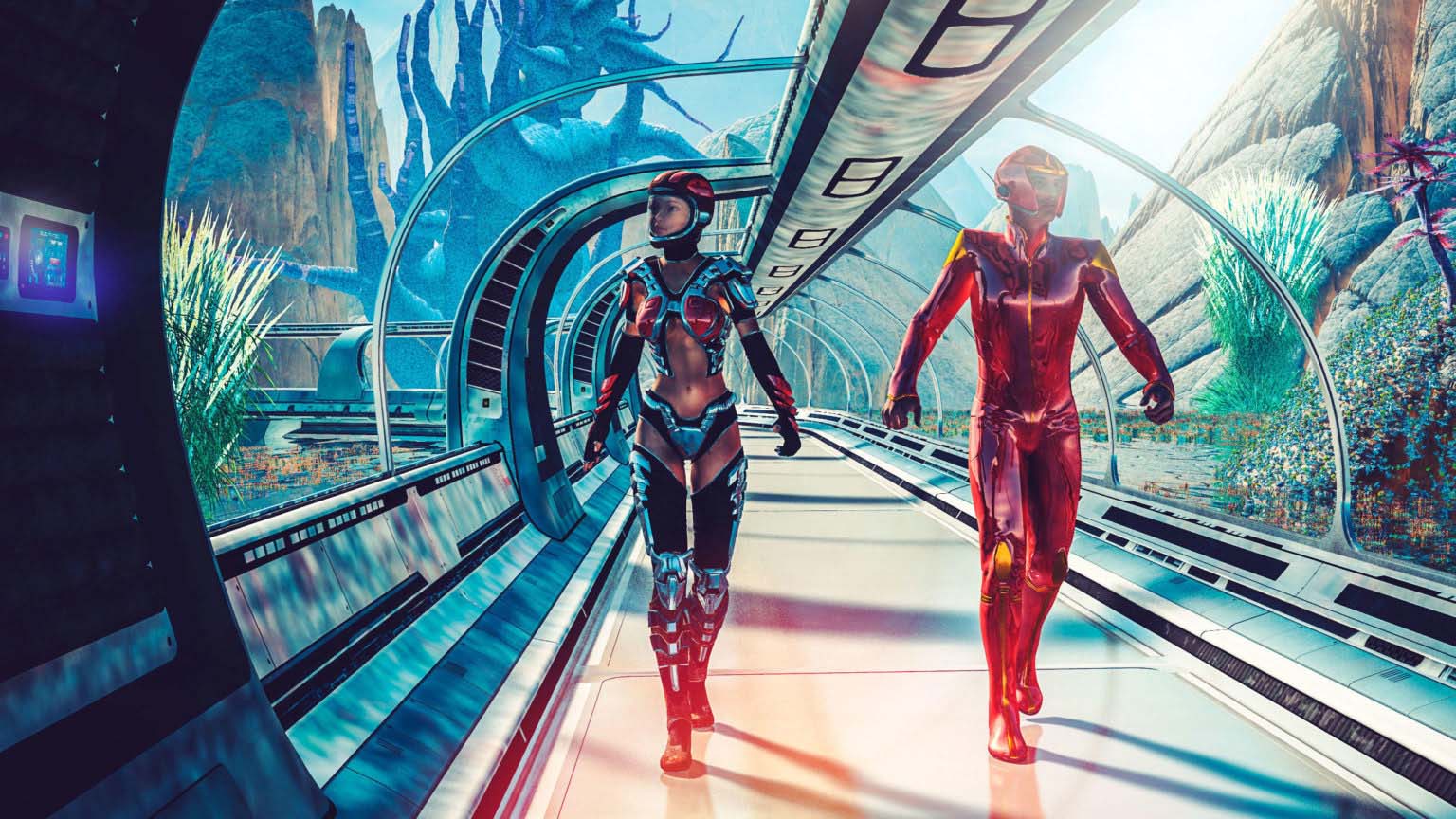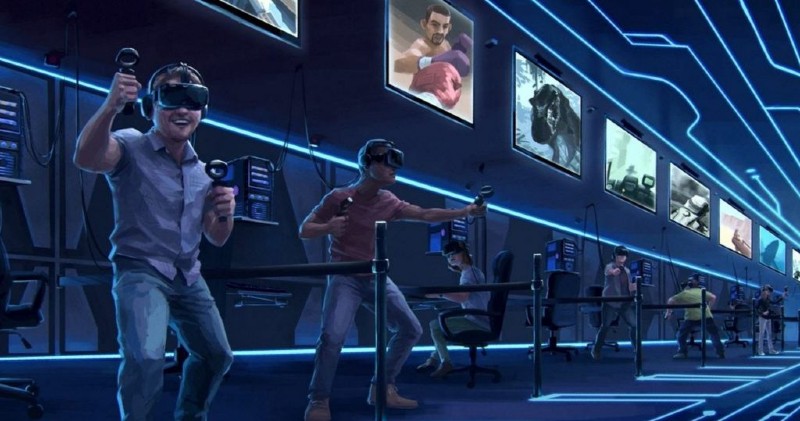The Future Of Free-to-Play Gaming: A Look At The Landscape In 2025
The Future of Free-to-Play Gaming: A Look at the Landscape in 2025
Related Articles: The Future of Free-to-Play Gaming: A Look at the Landscape in 2025
Introduction
With enthusiasm, let’s navigate through the intriguing topic related to The Future of Free-to-Play Gaming: A Look at the Landscape in 2025. Let’s weave interesting information and offer fresh perspectives to the readers.
Table of Content
The Future of Free-to-Play Gaming: A Look at the Landscape in 2025

The gaming industry is constantly evolving, and one of the most significant trends is the rise of free-to-play (F2P) games. This shift has dramatically altered the way games are developed, marketed, and consumed. By 2025, the F2P model is expected to be even more dominant, with a greater emphasis on monetization strategies that go beyond traditional microtransactions. This article delves into the projected landscape of F2P gaming in 2025, exploring the key factors driving its growth, the evolving monetization models, and the potential impact on the industry.
The Rise of Free-to-Play: A Paradigm Shift
The free-to-play model has become increasingly popular due to its accessibility and low barrier to entry. Players can experience a game without any upfront cost, potentially leading to a wider audience and increased engagement. This has led to a surge in the development of F2P games across various genres, from mobile games to AAA titles.
Several factors contribute to the dominance of the F2P model:
- Accessibility: Free-to-play games eliminate the financial hurdle for players, allowing them to try out a game without any risk. This opens the doors to a broader audience, including those who may be hesitant to invest in a full-priced game.
- Mobile Gaming: The rise of mobile gaming has further fueled the popularity of F2P games. Mobile devices offer a convenient platform for casual gaming, and the F2P model aligns perfectly with this trend.
- Microtransactions: F2P games often rely on microtransactions to generate revenue. These transactions allow players to purchase in-game items, such as cosmetics, currency, or advantages, providing a sustainable business model for developers.
- Engagement and Retention: F2P games are designed to encourage long-term engagement. The use of mechanics like daily rewards, events, and social features keeps players coming back for more, maximizing the potential for monetization.
Evolving Monetization Models: Beyond Microtransactions
While traditional microtransactions will continue to play a role in F2P games, 2025 will see the emergence of more sophisticated monetization models. These models focus on providing value to players while generating sustainable revenue:
- Subscription Services: Similar to streaming services, subscription models offer players access to premium content, exclusive features, and benefits. This approach provides a consistent stream of revenue for developers while offering players a value proposition.
- In-game Advertising: Non-intrusive advertising can be integrated into F2P games to generate revenue. This model requires careful implementation to ensure that it does not negatively impact the player experience.
- Play-to-Earn: The concept of "play-to-earn" allows players to earn cryptocurrency or other digital assets by playing games. This model has the potential to revolutionize F2P gaming, but it also raises concerns about sustainability and regulation.
- Dynamic Pricing: Implementing dynamic pricing strategies based on player behavior and market conditions can optimize revenue generation. This approach allows developers to adjust prices for in-game items based on demand and player willingness to pay.
The Impact of F2P Gaming in 2025
The rise of F2P gaming in 2025 is expected to have a profound impact on the industry:
- Increased Competition: The F2P model fosters intense competition among developers. To succeed, games need to stand out with compelling gameplay, engaging content, and effective monetization strategies.
- Focus on User Experience: To retain players in a competitive market, developers must prioritize user experience. This includes providing a polished and enjoyable gameplay experience, addressing player feedback, and fostering a sense of community.
- Shifting Development Models: F2P games often require a different development approach compared to traditional paid games. Developers must consider the long-term viability of the game, focusing on updates, content releases, and ongoing engagement.
- New Business Models: The emergence of new monetization models like subscriptions and play-to-earn will further reshape the F2P landscape. Developers will need to adapt and innovate to stay ahead of the curve.
FAQs about Free-to-Play Games in 2025
Q: How will free-to-play games evolve in terms of monetization?
A: Free-to-play games will continue to evolve beyond traditional microtransactions. Subscription models, in-game advertising, play-to-earn mechanisms, and dynamic pricing strategies are expected to become increasingly prevalent.
Q: What will be the impact of play-to-earn on the free-to-play landscape?
A: Play-to-earn has the potential to revolutionize free-to-play gaming by providing players with economic incentives. However, its long-term sustainability and regulatory challenges remain to be seen.
Q: How will free-to-play games address concerns about predatory monetization?
A: Developers will need to be transparent and responsible in their monetization strategies. Implementing ethical practices, providing clear information about in-game purchases, and offering alternative ways to progress in the game are crucial to fostering a positive player experience.
Q: Will free-to-play games become the dominant model in 2025?
A: Given the current trends, free-to-play is likely to become the dominant model for games across various platforms. Its accessibility, engagement, and revenue potential make it a highly attractive option for developers.
Tips for Developers: Creating Successful Free-to-Play Games in 2025
- Focus on Core Gameplay: Ensure the core gameplay loop is compelling and engaging to attract and retain players.
- Embrace User Feedback: Actively listen to player feedback and use it to improve the game and address any issues.
- Experiment with Monetization Models: Explore different monetization models to find the best fit for your game and target audience.
- Foster a Community: Encourage player interaction and create a sense of community through in-game features and events.
- Prioritize Transparency: Be transparent about your monetization strategies and provide clear information about in-game purchases.
Conclusion: The Future of Free-to-Play Gaming
The future of free-to-play gaming in 2025 is exciting and dynamic. As the industry evolves, developers must adapt and innovate to stay ahead of the curve. By embracing new monetization models, focusing on user experience, and fostering a sense of community, developers can create successful and engaging free-to-play games that resonate with players worldwide. The future of gaming lies in the hands of those who can create compelling experiences that are both enjoyable and financially sustainable.








Closure
Thus, we hope this article has provided valuable insights into The Future of Free-to-Play Gaming: A Look at the Landscape in 2025. We hope you find this article informative and beneficial. See you in our next article!
You may also like
Recent Posts
- The Evolving Landscape Of Online Gaming In 2025: A Look At Emerging Trends And Innovations
- The Evolving Landscape Of Online Gaming On PS4 In 2025: A Glimpse Into The Future
- The Evolving Landscape Of Free Online Gaming: A Look Into Microsoft’s Vision For 2025
- The Evolution Of Online Slots: Exploring The Landscape Of Free Play In 2025
- The Enduring Charm Of 8-Bit: Exploring Online Retro Gaming In 2025
- The Evolving Landscape Of Free Virtual Games: A Glimpse Into 2025
- The Evolving Landscape Of Online Two-Player Games For Kids: A Look At 2025
- Wordplay In The Digital Age: Exploring The Evolution Of Online Word Games In 2025
Leave a Reply